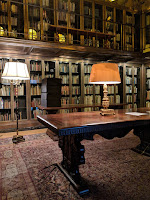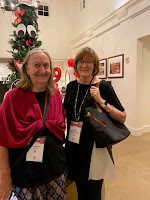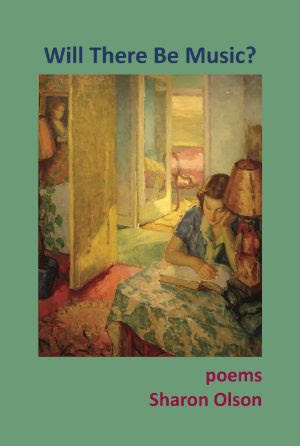 |
| Chicago |
The year 2019 began with the publication by Cherry Grove Collections of my second book of poems,
Will There Be Music? The book launch took place in Guilford, Connecticut, reading for the Guilford Poets Guild on April 27, 2019. But even before the book launch, I decided to attend AWP in Portland, Oregon, and to take Amtrak across the country as a sort of meditative journey, arriving in time for the conference which began March 27. I was able to touch base with lots of west coast poetry friends there, as well as staying with my college friend Peggy and her husband Bill. We drove up the Columbia as far as Cascade Locks and found the Sacagawea statue, and also went to see the University of Oregon women win the game that sent them to the Final Four!
 |
| Ward Ritchie Collection |
 |
| Clouds Brushed in Later |
Bill met me in Southern California where we visited my sister for a few days, then drove up to the Pasadena area. Some highlights were visits to two cemeteries where I found my Swedish grandmother (in Long Beach) and my maternal grandparents (in Whittier); a tour of the William Andrews Clark Library and its Ward Ritchie Collection (where a copy he owned of my chapbook resides); Santa Anita racetrack; and a tour of the Charles F. Lummis House with Kirk and Melinda.
 |
| Santa Barbara Mission |
Unbeknownst to my sister, we needed to kill time before her "surprise" birthday party, so we drove up to Santa Paula, were given a tour of Ojai by my Italy XIV friend Jerry Dunn, and hung out with friends Fran and Roger, and Gil and Joan in Santa Barbara, visiting the Santa Barbara Mission among other sites. When the time came, we truly did surprise my sister at Kent and Cindy's house.
Returning to the east coast, there were two readings for my book, one as mentioned above in Guilford, CT, and the second at the Princeton Public Library in June. In between these events was a quick trip to Buffalo to attend my step-daughter-in-law's graduation from the University of Buffalo Law School. On the way home I managed to create a genealogical mini-tour at Honeoye Falls, where some of my Sandfords migrated in the early 1800s.
 |
| Honeoye Falls, NY |
In late July I joined my poetry friends in Chester, Connecticut where suitable hijinks as well as serious endeavors took place. Then on to Drew Farm, the grandchildren, swimming, the Rock Party, all went on as usual. On the way home I convinced Bill to take a detour to Vermont where we found a monument to one of the Sandfords in Weybridge, and then we stayed two nights at the Inn in Westport (NY), and on the day in between we drove up to Long Lake and had lunch with a distant cousin of mine, also a Sandford, a fellow writer Pat Garber.
 |
| With Ned at the game |
 |
| With Tom and Cindy at the game |
 |
| With Holly at class party |
In September I gave my third reading for my book at the Newtown Library Company. Then in October I flew back to Portland, Oregon, where my friend Penelope had invited me to read at her White Dog Salon. Staying again with Peggy and Bill, and the last night at Penelope's, was quite cozy. The next stop, meeting Bill in the Bay Area where my Stanford Class of '69 50th reunion was about to begin. As one of the volunteers I got to go to an extra party, and Bill and I attended dinner on the Quad before a cold virus struck him down. I avoided this malady for the nonce and was able to attend the class party, the football game (where our class walked on the field during halftime), and the dinner I arranged at Vaso Azzurro in Mountain View for 24 members of our Italy XIV group (with some spouses, luckily Bill was able to bounce back for that!). We stayed in town an extra week to visit Palo Alto friends, and ended with a final reading at Waverley Writers before we flew home. Some highlights were being driven to the first event by my friend Holly in a tiny bright red Mazda Miata, re-connecting with my freshman friend Ned Wight (who swung me around expertly at the class party), attending the football game with Italy friend Tom, who plastered a red pompom on his head for the walk across the field, and being sung to for my birthday by my Italy group and the entire restaurant at Vaso Azzurro! The Waverley reading was especially lovely, so nice to connect with such old friends.
 |
| With Bill at Vaso Azzurro |
 |
| Poem I wrote for our class |











































